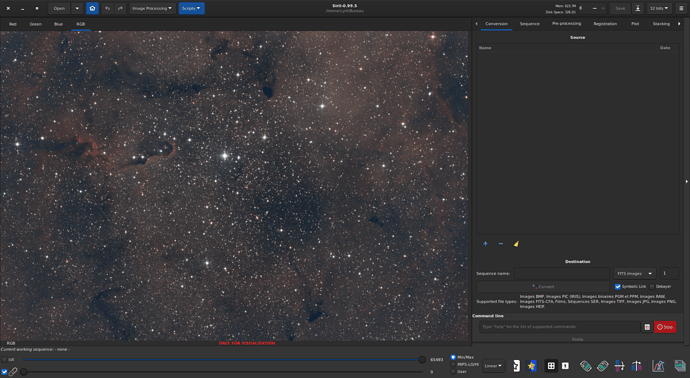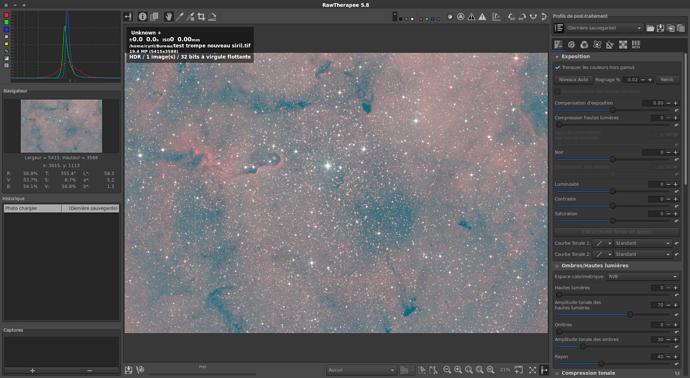Hello community.
As we have announced recently, we have released a beta version of the future Siril.
So far the feedback has been good and we are happy.
Of course, we have some bugs we are trying to fix it. One of them is very annoying for me as my skill in this field are weak.
This new version provide 32-bit floating precision pixels. That’s great, but we have some issues with 32-bit TIFF images (not with 16-bit, I don’t know why), and probably with png.
Here an example of a TIFF image: FileSender
Users told me that opening it with Photoshop (and Lightroom) leads to a corrupted image. For me, with GIMP I have no issue. However, I can reproduce the issue using RT.
This is because RT does not make any assumption of the ICC profile while GIMP do it.
So, my clue is that Photoshop and LR do the same than RT (but I cannot test it): no assumption.
- Now, what is the best easiest way to embed a ICC profile in TIFF files (and PNG). I would like to avoid, at least in a first time, the use a new lib like littleCMS. I would like to just embed a simple sRGB profile inside the files.
With libtiff we can use the TIFF_TAG: TIFFTAG_ICCPROFILE but I do not well understand how it works.
Should I read a sRGB.icc file and include the buffer in
TIFFSetField(tif, TIFFTAG_ICCPROFILE, buffer_size, buffer);?
But in this case, what about Windows, MacOS, … Can we find sRGB.icc easily? Must I upload it to the sources? Is my reasoning wrong?
- Other question, why I only see this issue with 32-bit TIFF images? Not with the 16-bit ones, while I think I have the issue with 16-bit PNG.
Cheers,



